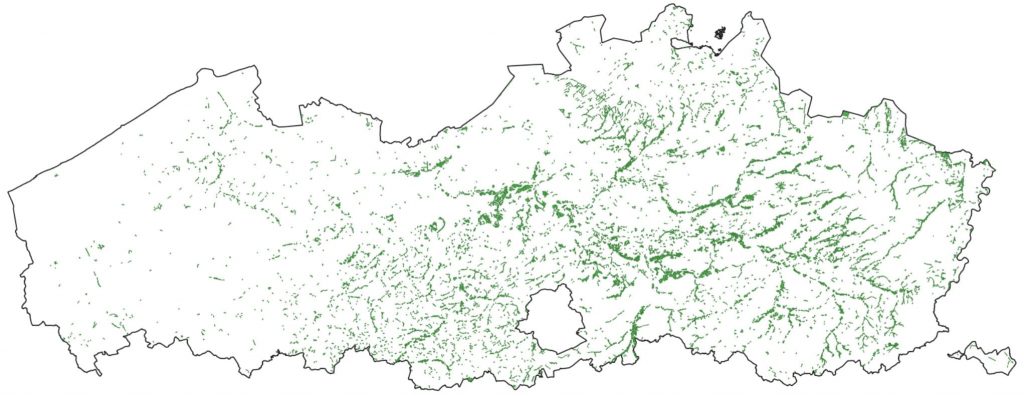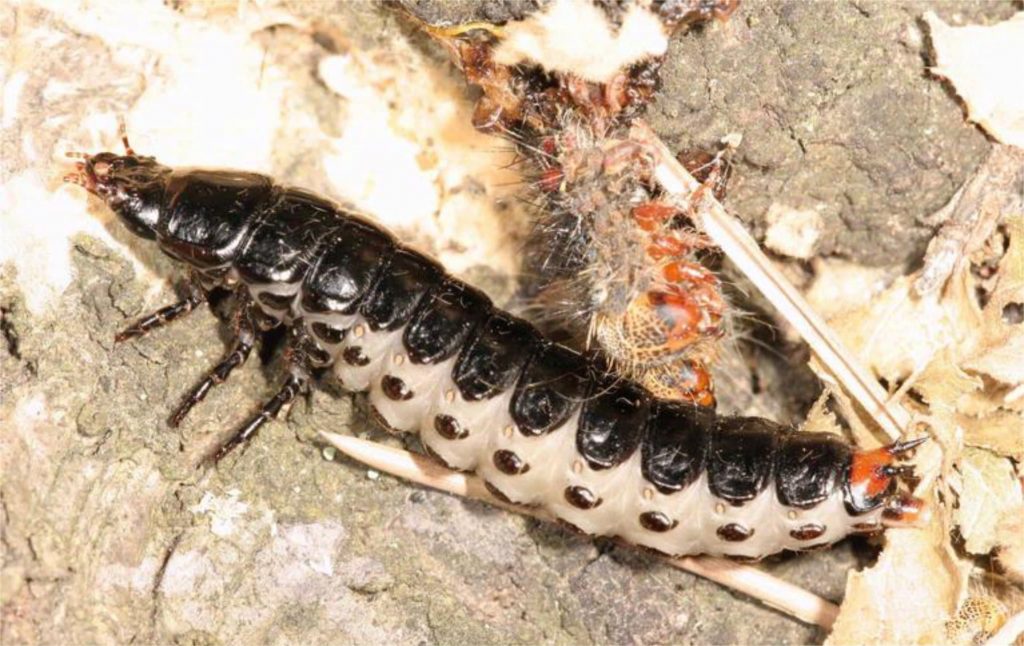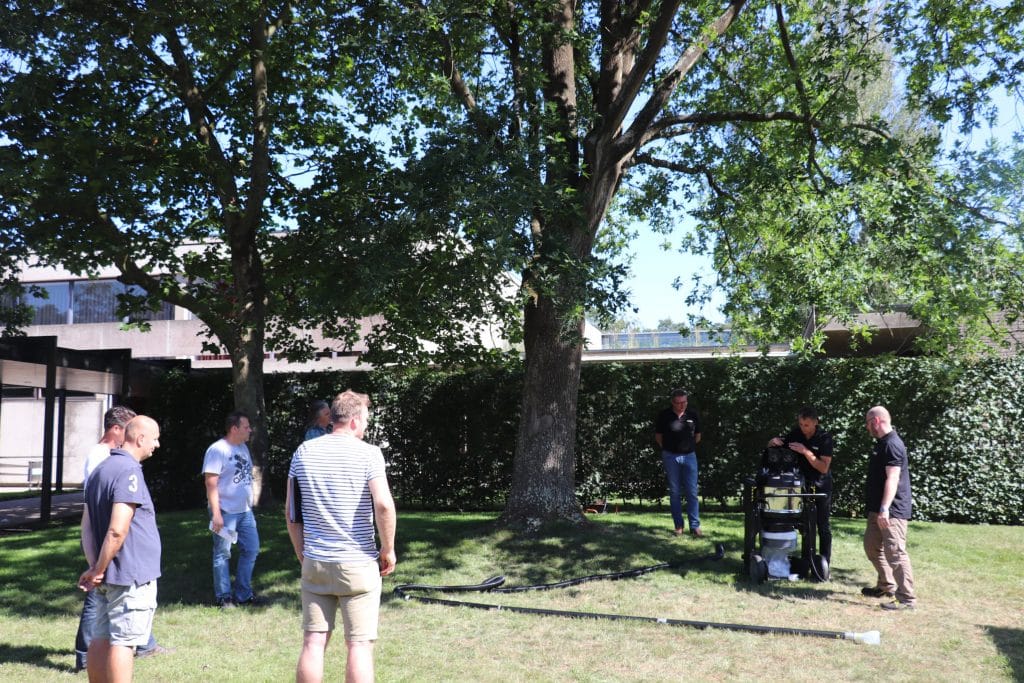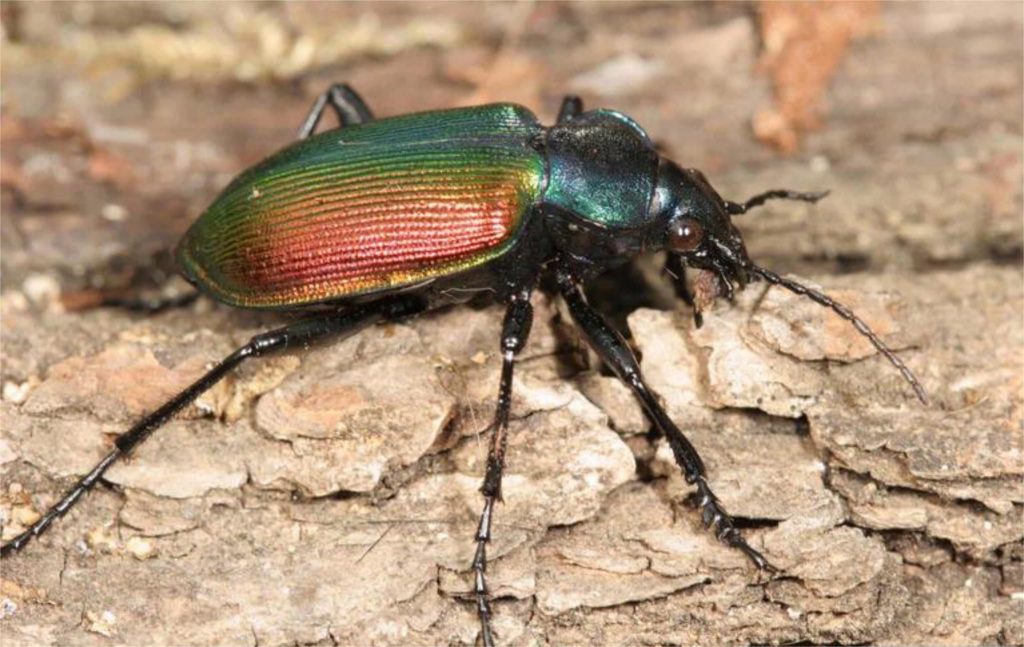LIFE Oak Processionary
Breading and releasing the forest caterpillar hunter
Oak processionary caterpillar control by breeding and releasing the forest caterpillar hunter (Calosoma sycophanta).
The forest caterpillar hunter
The forest caterpillar hunter is a ground beetle which is indigenous to Europe. The species is currently under serious threat in Belgium and died out completely in the Netherlands some decades ago. Because the beetle loves to eat a range of primarily hairy caterpillars, which tend to be avoided by other animals, the forest caterpillar hunter is a welcome species in areas where certain types of moth/butterfly are multiplying out of control.
A beetle pair consumes around 200 caterpillars per season. A larva will eat up to 40 caterpillars and 13 pupae per season. The beetle has therefore been employed as a biological control agent by means of introduction into areas where they do not usually occur (e.g. USA and Canada). The beetle has also been released in areas where the species is already found but where their quantities are too small to tackle the caterpillar plague.
We would like to try this latter approach on a small scale in Belgium and, if it is successful, expand it to the Netherlands. In the long-term, we would like to work in collaboration with pest-control companies.
Calosoma sycophanta (CS) expert group
In order to effectively manage and monitor the breeding and release of the Calosoma Sycophanta or forest caterpillar hunter in Belgium, a CS expert group will be created. This will include specialists and entomologists from Belgian and foreign research institutions. They will meet at regular intervals and monitor everything from breeding to releasing the species.
Habitat model – forest caterpillar hunter
If you wish to release or reintroduce a species, you are advised to do so at a location (habitat) that is suitable for this species. That is why we first wish to develop a habitat model which will help us identify, find and select suitable locations for the forest caterpillar hunter. The habitat model is a GIS exercise, which makes use of the most recent habitat map of Flanders. On the basis of the habitat requirements that we know for beetle populations from neighbouring countries (Germany/France), the Research Institute for Nature and Forest (INBO) will draw up a habitat model for the forest caterpillar hunter which will also be verified in the field. This model can be used to select the most promising locations for reintroduction.

Breeding the forest caterpillar hunter
Various institutions in Turkey have developed expertise in breeding the forest caterpillar hunter. There, they use this beetle to (biologically) tackle the pine processionary; a caterpillar that is closely related to the oak processionary. Project partners from Limburg, Antwerp and the INBO will go to Turkey to learn about breeding the forest caterpillar hunter and then start up breeding centres in Limburg and Antwerp. The aim is to breed at least 10,000 beetles, 6,000 of which will be used for field experiments.


Releasing the forest caterpillar hunter
At 2 locations in the province of Antwerp and 2 locations in the province of Limburg, which will be selected on the basis of the habitat model, the forest caterpillar hunter will be introduced to the soil in the spring, during the last larval stage or as a pupa. This will, of course, take place near oak trees that are infected with the oak processionary. After a few weeks, the beetles will emerge and, hopefully, eat the hairy processionary caterpillars. There will be close monitoring of precisely when the beetles crawl out of the ground and climb the trees.
Tracking the forest caterpillar hunter in the field
At each location, we will equip 10 beetles with a lightweight transmitter (0.2g) and then release them into suitable environments, with a few weeks between each release. We will do this in order to monitor the comings and goings of the beetles and learn more about their preferred habitat. Light traps will also be used to catch the beetles and monitor their populations. The work with transmitters will be conducted with the University of Hasselt.

Demonstration moments on site
During organised demonstration moments, we will take the various stakeholders to the sites themselves. While there, we will explain and demonstrate the impact of the forest caterpillar hunter’s release on the oak processionary. If successful, we will endeavour to convince pest-controllers and local authorities to apply this method within their own pest-control plans.

